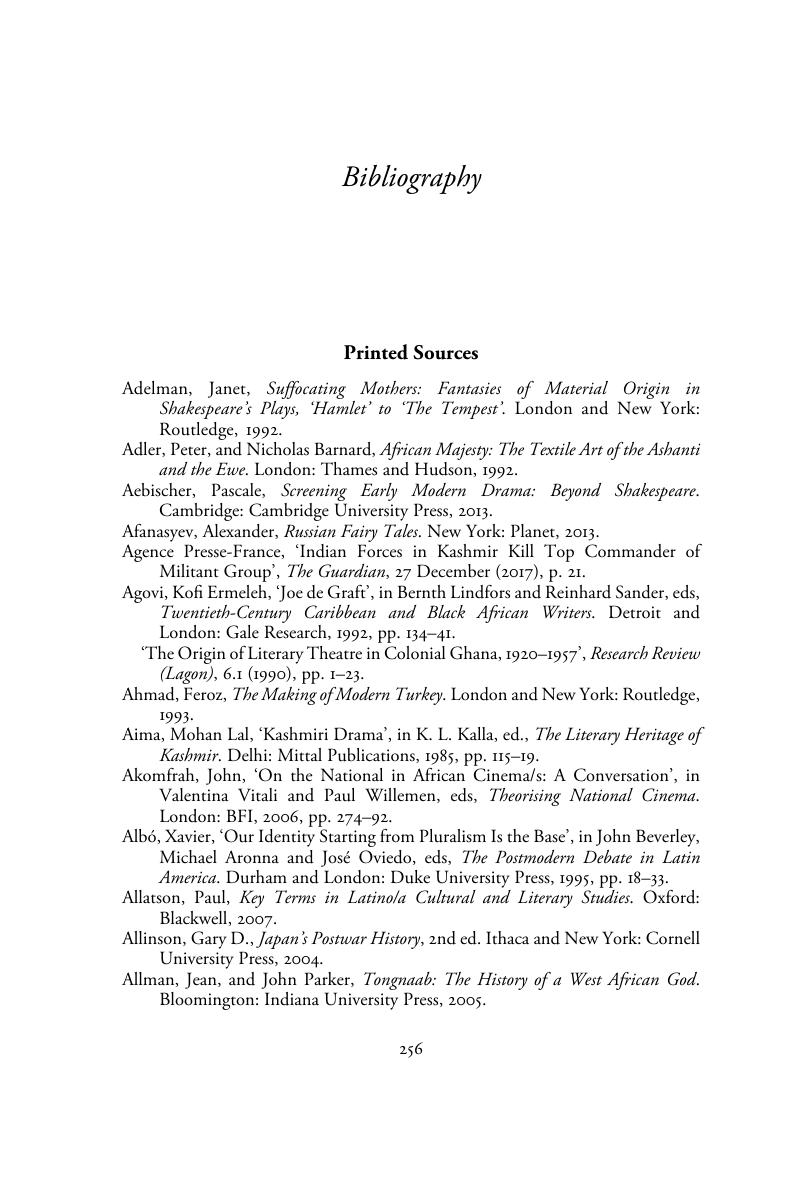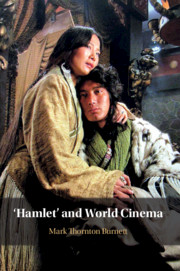Book contents
- ‘Hamlet’ and World Cinema
- ‘Hamlet’ and World Cinema
- Copyright page
- Dedication
- Contents
- Figures
- Acknowledgements
- A note on texts and titles
- Introduction
- Chapter One Hamlet, Cinema and the Histories of Western Europe
- Chapter Two Thematizing Place: Hamlet, Cinema and Africa
- Chapter Three Hamlet and the Moment of Brazilian Cinema
- Chapter Four Pairing the Cinematic Prince: Hamlet, China and Japan
- Chapter Five Hamlet and Indian Cinemas: Regional Paradigms
- Chapter Six Gendering Borders: Hamlet and the Cinemas of Turkey and Iran
- Chapter Seven Materializing Hamlet in the Cinemas of Russia, Central and Eastern Europe
- Filmography
- Bibliography
- Index
- References
Bibliography
Published online by Cambridge University Press: 21 June 2019
- ‘Hamlet’ and World Cinema
- ‘Hamlet’ and World Cinema
- Copyright page
- Dedication
- Contents
- Figures
- Acknowledgements
- A note on texts and titles
- Introduction
- Chapter One Hamlet, Cinema and the Histories of Western Europe
- Chapter Two Thematizing Place: Hamlet, Cinema and Africa
- Chapter Three Hamlet and the Moment of Brazilian Cinema
- Chapter Four Pairing the Cinematic Prince: Hamlet, China and Japan
- Chapter Five Hamlet and Indian Cinemas: Regional Paradigms
- Chapter Six Gendering Borders: Hamlet and the Cinemas of Turkey and Iran
- Chapter Seven Materializing Hamlet in the Cinemas of Russia, Central and Eastern Europe
- Filmography
- Bibliography
- Index
- References
Summary

- Type
- Chapter
- Information
- 'Hamlet' and World Cinema , pp. 256 - 283Publisher: Cambridge University PressPrint publication year: 2019

